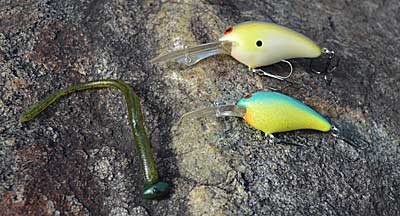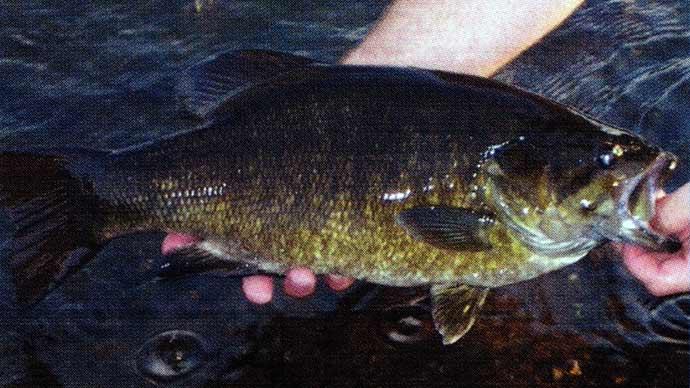
After working his way to the top of local and regional tournaments close to home, Shane Lineberger took his show on the road. Finally, the Lincolnton, North Carolina, bass angler made it to the big time, competing on the Bassmaster Elite Series and Tackle Warehouse Pro Circuit. But the 2023 season may bring his biggest challenge yet — the Bassmaster Opens Elite Qualifiers. The carrot for this bass-fishing stick is one of nine Elite Series invitations that go to the top finishers in the season-ending standings.
The Opens EQ is nine tournaments spread across the eastern half of the United States and nearly a full calendar year. “It’s a very diverse schedule,” Lineberger said. There are bodies of water that he’s never seen and some that are familiar. It starts on the Alabama-Georgia line at Lake Eufaula, which he fished just once before, a 2020 Elite Series tournament.
Designed to test competitors' skills, Lineberger and the rest will fish for bass in almost every conceivable water depth, cover, and structure combination. But for at least the beginning of the schedule, they’re guaranteed to encounter post-spawn bass.
Moody, solitary, and exhausted post-spawn bass have earned the bad rap of being difficult to catch. And while it’s deserved to a degree, it doesn’t mean you should avoid them. Lineberger can’t — tournaments are scheduled when they are scheduled — and you shouldn’t either. So while other anglers target pre-spawn and spawning bass, you’ll have most of them to yourself. And by using Lineberger’s four-prong approach, you’ll catch plenty, including big ones.
- Eyes Open
Water temperature, moon phase, and amount of daylight are used to determine the start of bass spawning. Lineberger uses them to predict the first post-spawn bass. “Post-spawn fishing for me begins when you start seeing fish on beds,” he said. “There are fish that have already spawned. Many people don’t look at it that way.”
Image
Post-spawn bass move to the nearest deep-water cover after recuperating and guarding fry in the shallows. Bassmaster Opens EQ angler Shane Lineberger catches them with a heavy shaky head and crankbaits. Photo by Pete M. Anderson Not every bass spawns in a given year. And of those that do, they don’t bed en masse. Instead, they spawn in waves. The first goes to the bank when the water temperature reaches the mid-50s. Other conditions, such as water level, weather changes, and moon phase — spawning increases around full moons — dictate the size and timing of each wave. Under ideal conditions, such as consistent weather, a steadily rising water temperature, and a stable water level, the spawn happens quickly. But hiccups in any of those can slow the spawn, extending it to late spring or even early summer. Finally, when the water temperature reaches the high 70s, you can be confident it's done until next spring.
Before you can catch bass, you must find them. Lineberger finds the first spawners in the lower end, where the water warms first, on most reservoirs. The exceptions have a warm-water discharge from a power plant; the surrounding water — “hot hole” — is often warmer than anywhere else in the reservoir. He expands his search toward the headwaters as spring progresses. Similar situations start in the northwest corner of natural lakes, which receive the most direct sunlight in spring, and river backwaters, whose shallow waters and dark bottoms warm quickly.
Wherever Lineberger is fishing, he knows there is post-spawn bass to be had when he sees one thing — fry. The presence of these newly hatched bass means the first round of spawning has taken place. And from that point until summer, post-spawn fishing will only get stronger.
- Post Up
Spawning is a rigorous process that takes a physical toll on bass. "It's the weakest time of the year for bass," Lineberger said. "They're stressed out and need to feed up and get well again. They want to be left alone. They want time to recuperate.” While that attitude has contributed to post-spawn bass’ reputation, it doesn’t mean it’s impossible to make them bite.
Lineberger starts looking for post-spawn bass near their beds. “I try to find docks coming out of spawning pockets,” he said. “The first place you see fry is usually around dock posts.” Docks provide a place of rest for mature bass and plenty of protection from predators, such as bream, for young bass. These bass and fry will hide in aquatic vegetation if it's available.
Small and subtle topwaters are Lineberger’s first choice for chasing these bass. He casts them close to dock posts and slowly works them past each one. That keeps them in the strike zone longer, giving bass more time to commit. These two topwater styles offer the perfect mix of those attributes:
- Poppers: With an open mouth and small profile, these classic topwaters can be worked painfully slow with unlimited pauses, which can be more critical to attracting big bass than their spitting or chugging. Popular ones include Rebel's Pop-R, Don Iovino's Splash-It, and Megabass' Pop-X.
- Balsa minnows: Don’t let walleye anglers have all the fun with these baits, which define subtle topwater. Quick twitches cause them to dart — an action that can be enhanced by tying a loop knot or using a snap — but not moving too far forward. Try Rapala's Original Floater No. 11 or Bagley's Bang-O-Lure.
Dock posts are a reliable pattern through spring. They reload with new bass after each spawning wave. Bass that had been living there eventually begin setting up in other locations. Lineberger said those spots might not be far away, but they are deeper.
- Go Deep
Image

Post-spawn bass move to the nearest deep-water cover after recuperating and guarding fry in the shallows. Bassmaster Opens EQ angler Shane Lineberger catches them with a heavy shaky head and crankbaits. Photo by Pete M. Anderson After they've spent time recuperating around shallow-water cover, post-spawn bass head offshore. Lineberger finds them relating to the first available cover, such as stumps, brush, or rock. It's even better if it's connected to structure such as a creek channel, point, or ledge. He said their depth depends on the fishery.
Lineberger cut his bass-fishing teeth on lakes across North Carolina’s Piedmont, but he’s most familiar with Lake Norman, the largest reservoir entirely within the state. He said post-spawn bass retreat to cover in 30 to 35 feet because of the relatively clear water. But up the road on High Rock Lake, a Yadkin River impoundment that's hosted three Bassmaster Classics, he finds post-spawn bass only 12- to 15 feet deep. Water that's usually stained to muddy puts them there.
While these bass can hold on a wide variety of spots, Lineberger uses a limited selection of lures. Limiting his choices means more time fishing and less time deciding and rigging. Here's what he ties on his line:
- Shakey head: While the 4- to 6-inch finesse worm — Lineberger prefers Reaction Innovations’ Flirt Worm — is familiar, the lead head weighs ½ ounce, more than double a traditional shaky head. It sinks through deep water quickly, but more importantly, it stays on the bottom better, increasing his feel.
- Crankbait: Choose a rounded deep-diver, such as Norman’s DD-22 or Berkley’s Money Badger 7.25, that runs slightly deeper than your fishing spot, ensuring it bounces off the bottom and cover, attracting more bass. Natural patterns work best in clear water and under sunny skies. Save brighter ones like fire tiger for stained or muddy water and overcast skies.
Post-spawn bass stay in these spots for three to four weeks, continuing to recover. At that point, Lineberger said they do one of two things. Some stay or go deeper, chasing schools of shad over humps and along river channels throughout the summer. The rest, including some of the biggest bass in a system, return to the shallows. And that’s where Lineberger goes, too.
- Back to the Bank
You can always find some bass in shallow water, no matter where you’re fishing. Lineberger said post-spawn bass return to the shallows to feast on bream. They spawn on the full moons through summer, making beds next to cover on many of the same hard-bottomed spots where bass recently finished spawning.
Lineberger turns to topwaters again, casting them under overhanging cover such as the lowest branches of a shoreline tree or a floating dock’s walkway. Post-spawn bass prefer these shallow-water spots because of the shade they create. While bream spawn in sunny spots, bass will lurk nearby, using the shade to hide their presence.
Bream-eating bass travel alone or in small wolf packs. Finding them requires covering water. But getting them to bite isn't difficult because they're nearly or fully recovered from spawning. Lineberger chooses a brightly colored topwater that can be worked slowly. But unlike while fishing around dock posts, he wants one with a large profile that makes a commotion. Here are three strong contenders:
- Prop baits: The Prop Bee, which is handcrafted by Brian Huskins not far from Lake Norman, is a popular choice, along with Cotton Cordell’s Crazy Shad and River2Sea’s Whopper Plopper. They make plenty of commotion, even with short twitches. That combination is irresistible to big bass.
- Walking baits: Learn to fish this style of topwater, which includes Heddon's Zara Spook and Megabass' Giant Dog X, with slack in your line. That'll allow yours to move side to side more than forward with each twitch, slowing your retrieve.
- Hollow-bodied frogs: While you may not always need their weedless capabilities, they’re easy to skip into tight places and stay on the surface when you pause your retrieve. Some, such as Reaction Innovations’ Swamp Donkey, can be worked like a walking bait or have a cupped nose like a popper, such as Terminator's Popping Frog. Both add action.
Bass begin the bream-based topwater bite during the post-spawn period. But it quickly transitions into a summer pattern that continues through August’s full moon, when bream stop spawning.




